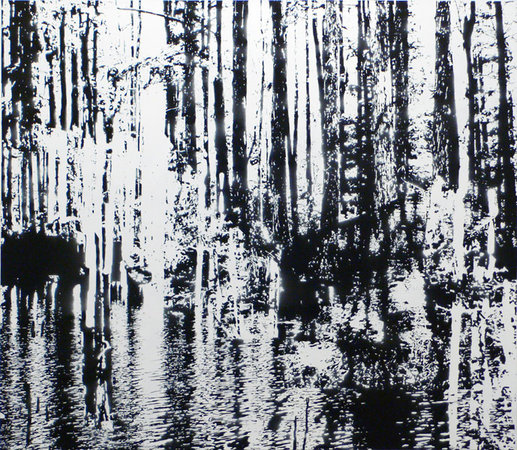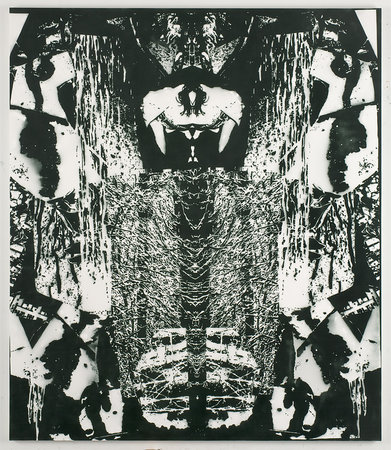
Abstract painting from the age of the image search
How do online searches inform abstract painting? Quite directly, in the case of the American artist David Ratcliff
From the end of the 1960s, contemporary artists began to depart from the confines of the studio and the canvas in droves, either taking advantage of emerging new technologies such as video, working in outdoor, site-specific locations or expressing themselves dynamically, in the medium of performance. However, as Bob Nickas shows in our excellent and exhaustive survey, Painting Abstraction, the medium of painting has re-exerted its thrall in recent years.
Nickas examines the work of 80 artists, grouping them into various chapters according to their take on abstract painting. These include Rhythm and Opticality, Colour and Structure and Form, Space and Scale – and Hybrid Pictures, in which we discover the extraordinary, strangely harrowing yet utterly compelling works of David Ratcliff.

Ratcliff uses both discarded and present-day tools to create his collages. He employs stencils to apply his paint but sources his material from the internet, finding images using open-ended word searches in order to yield unexpected results. Since 2005 he has restricted himself to just two colours – black and white, or blue or metallic gold and white. Through a complex series of altering and recycling and (literally) distressing techniques, Ratcliff creates images which remotely hint at their figurative origins but are mutated into disturbing abstractions.
Lake (2007) contains rippling hints of water but its myriad reflections create a grimly gothic, bayou-like effect. Mirror 2 and Mirror 3 (2008), meanwhile, are compared by Nickas to Rorschach blots – the stuff of psychological nightmares, as befitting the uncertain times in which they were made.

Ratcliff cites Picasso as an inspiration, particularly the way in which his paintings “force the rational mind into irrational, psychologically compressed and frightening spaces.” A reminder, there, of the great traditions which draw new artists to the medium over 100 years after its inception.
Have you enjoyed this insight? Then consider ordering a copy of our newly updated Painting Abstraction, the most authoritative book on abstract painting currently available.